 Winter scenes of Sonogi tea fieldsJust a few days before Christmas, the weather in Higashisonogi turned cold and we were lucky to receive a dusting of snow on the tea fields. A week prior we had a warm spell reaching up to 20ºC but within the span of 2 days it dropped down to freezing point. Apparently it’s quite rare for the […]
Winter scenes of Sonogi tea fieldsJust a few days before Christmas, the weather in Higashisonogi turned cold and we were lucky to receive a dusting of snow on the tea fields. A week prior we had a warm spell reaching up to 20ºC but within the span of 2 days it dropped down to freezing point. Apparently it’s quite rare for the […]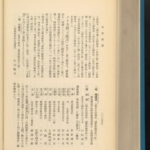 How did tamaryokucha get its name?Lets break down the kanji (characters) for tamaryokucha first: 玉緑茶 (tamaryokucha) 玉 tama = ball, gem, (spherical) jewel緑 ryoku = green茶 cha = tea Just by looking at the characters for tamaryokucha, you immediately know that we are talking about a curly shaped green tea.The character 玉 can also be […]
How did tamaryokucha get its name?Lets break down the kanji (characters) for tamaryokucha first: 玉緑茶 (tamaryokucha) 玉 tama = ball, gem, (spherical) jewel緑 ryoku = green茶 cha = tea Just by looking at the characters for tamaryokucha, you immediately know that we are talking about a curly shaped green tea.The character 玉 can also be […]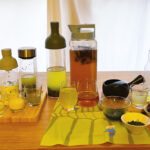 Coldbrew Tamaryokucha RecipesHow do I brew mizudashi (coldbrew) tamaryokucha? Tamaryokucha is perfect for 水出し (mizudashi) coldbrewing: highlighting not only its refreshing, sweet and vegetal taste but also the delightful enchanting green colour. The hot Japanese summer has inspired us to try out different tea coldbrew […]
Coldbrew Tamaryokucha RecipesHow do I brew mizudashi (coldbrew) tamaryokucha? Tamaryokucha is perfect for 水出し (mizudashi) coldbrewing: highlighting not only its refreshing, sweet and vegetal taste but also the delightful enchanting green colour. The hot Japanese summer has inspired us to try out different tea coldbrew […] Ikeda Cha-en Tamaryokucha SelectionTamaryokucha (玉緑茶) is Sonogi tea region’s speciality. In Nagasaki, ‘ocha’ (お茶) which means ‘tea’ is automatically assumed to be tamaryokucha. Ocha in other regions of Japan will usually be assumed to be sencha (煎茶) as it is by far the most prevalent tea throughout the rest of Japan. For our […]
Ikeda Cha-en Tamaryokucha SelectionTamaryokucha (玉緑茶) is Sonogi tea region’s speciality. In Nagasaki, ‘ocha’ (お茶) which means ‘tea’ is automatically assumed to be tamaryokucha. Ocha in other regions of Japan will usually be assumed to be sencha (煎茶) as it is by far the most prevalent tea throughout the rest of Japan. For our […] The Longest-Lived Tea Tree in JapanHow old is the longest-lived tea tree in Japan? The answer is over 300 years old! Currently, the longest tea tree in Japan is over 300 years old. This large tea tree is located at an altitude of 210 meters on the eastern slope of Mount Kokuzo, which straddles Higashisonogi Town in Nagasaki […]
The Longest-Lived Tea Tree in JapanHow old is the longest-lived tea tree in Japan? The answer is over 300 years old! Currently, the longest tea tree in Japan is over 300 years old. This large tea tree is located at an altitude of 210 meters on the eastern slope of Mount Kokuzo, which straddles Higashisonogi Town in Nagasaki […]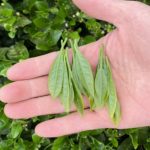 ActivitiesUnder our mission “Spread a peaceful world with Japanese tea”, we have 2 activities: Tea Tourism Online tea store Tea Tourism Join us to taste a selection of the local Sonogi tea specialties, including tamaryokucha (a curly shaped steamed green tea) which is this region’s speciality. Visit […]
ActivitiesUnder our mission “Spread a peaceful world with Japanese tea”, we have 2 activities: Tea Tourism Online tea store Tea Tourism Join us to taste a selection of the local Sonogi tea specialties, including tamaryokucha (a curly shaped steamed green tea) which is this region’s speciality. Visit […]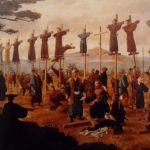 Crypto Christianity (Kakure Kirishitan)Hidden Christians. It is a well-known term in Japan, but until recently it was almost unknown overseas. Christianity is widely practiced overseas, especially in the West, but in Japan, it was forbidden and suppressed for nearly 300 years until the advent of civilization. The term “hidden […]
Crypto Christianity (Kakure Kirishitan)Hidden Christians. It is a well-known term in Japan, but until recently it was almost unknown overseas. Christianity is widely practiced overseas, especially in the West, but in Japan, it was forbidden and suppressed for nearly 300 years until the advent of civilization. The term “hidden […] Exporting of Japanese teaJapanese tea was first introduced to Europe in 1610 when a Dutch merchant ship brought tea back from Hirado in Nagasaki. This was the first tea for Europe. After that, England and other Western European countries became obsessed with tea, changing the world. However, in 1639, the Edo shogunate […]
Exporting of Japanese teaJapanese tea was first introduced to Europe in 1610 when a Dutch merchant ship brought tea back from Hirado in Nagasaki. This was the first tea for Europe. After that, England and other Western European countries became obsessed with tea, changing the world. However, in 1639, the Edo shogunate […]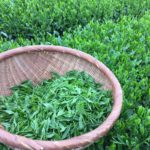 MissionSpread a peaceful world with Japanese tea! We believe tea connects people and cultures. Tea has been embraced by many different cultures across the world into the heart of their hospitality. Tea has spread across the world carrying endless stories. Stories from how the tea is grown and produced. […]
MissionSpread a peaceful world with Japanese tea! We believe tea connects people and cultures. Tea has been embraced by many different cultures across the world into the heart of their hospitality. Tea has spread across the world carrying endless stories. Stories from how the tea is grown and produced. […]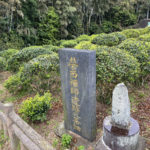 Oldest Japanese tea fieldsIn Hirado City, Nagasaki Prefecture, there is the oldest tea plantation in Japan. This tea field is said to have been opened by Eisai, the Zen monk who first introduced tea to Japan over 800 years ago in 1191. This tea plantation is called “Fushun-en,” and at the time when the tea was […]
Oldest Japanese tea fieldsIn Hirado City, Nagasaki Prefecture, there is the oldest tea plantation in Japan. This tea field is said to have been opened by Eisai, the Zen monk who first introduced tea to Japan over 800 years ago in 1191. This tea plantation is called “Fushun-en,” and at the time when the tea was […]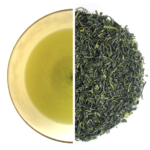 Tamaryokucha (Gem Green Tea)Tamaryokucha is a green tea that has a curved (curled) shape like a ball. Types of Tamaryokucha Currently, there are two types of Tamaryokucha due to differences in the manufacturing method. The first is Kamairi Tamaryokucha, which is made by the pan-fired method. The second is Tamaryokucha, which […]
Tamaryokucha (Gem Green Tea)Tamaryokucha is a green tea that has a curved (curled) shape like a ball. Types of Tamaryokucha Currently, there are two types of Tamaryokucha due to differences in the manufacturing method. The first is Kamairi Tamaryokucha, which is made by the pan-fired method. The second is Tamaryokucha, which […]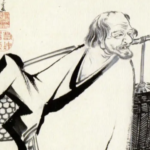 Tamaryokucha & Sencha, Ingen & Baisao“Tea, please!” If you were to ask a Japanese person that, they would probably offer you sencha. In the West, most people think of tea as black tea, but for the Japanese, tea means sencha. When did sencha start to be drunk in Japan? There is no doubt that sencha, like matcha, was introduced […]
Tamaryokucha & Sencha, Ingen & Baisao“Tea, please!” If you were to ask a Japanese person that, they would probably offer you sencha. In the West, most people think of tea as black tea, but for the Japanese, tea means sencha. When did sencha start to be drunk in Japan? There is no doubt that sencha, like matcha, was introduced […]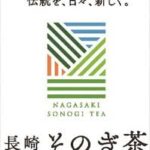 About Sonogi chaHigashisonogi-cho is the largest tea production area in Nagasaki, producing about 60% of Nagasaki’s tea. Higashisonogi-cho is located in the center of Nagasaki Prefecture, on a southwest-facing slope that leads from the mountains of the Tara mountain range to the calm sea of Omura Bay. […]
About Sonogi chaHigashisonogi-cho is the largest tea production area in Nagasaki, producing about 60% of Nagasaki’s tea. Higashisonogi-cho is located in the center of Nagasaki Prefecture, on a southwest-facing slope that leads from the mountains of the Tara mountain range to the calm sea of Omura Bay. […]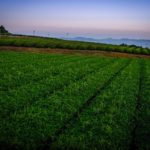 About Tea town, Higashi SonogiHigashisonogi-cho is the largest tea production area in Nagasaki, producing about 60% of Nagasaki’s tea. Higashisonogi-cho is located in the center of Nagasaki Prefecture, on a southwest-facing slope that leads from the mountains of the Tara mountain range to the calm sea of Omura Bay. […]
About Tea town, Higashi SonogiHigashisonogi-cho is the largest tea production area in Nagasaki, producing about 60% of Nagasaki’s tea. Higashisonogi-cho is located in the center of Nagasaki Prefecture, on a southwest-facing slope that leads from the mountains of the Tara mountain range to the calm sea of Omura Bay. […] About Ureshino TeaThis is a bit of a tricky topic because it requires some historical and geographical understanding. The origin of the name “Ureshino Tea” is Ureshino City, Saga Prefecture, which is also famous for Ureshino Hot Springs. Ureshino Tea Tea production in Ureshino started in 1440 when a […]
About Ureshino TeaThis is a bit of a tricky topic because it requires some historical and geographical understanding. The origin of the name “Ureshino Tea” is Ureshino City, Saga Prefecture, which is also famous for Ureshino Hot Springs. Ureshino Tea Tea production in Ureshino started in 1440 when a […]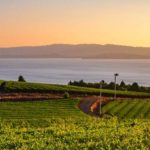 Tea in NagasakiTea in Nagasaki, the origin of Japanese tea. If you ask most Japanese people about it, they will probably say they don’t know anything about it. However, Nagasaki is a very important place in the history of tea. It is said that tea was first introduced to Japan in 1191, when the Zen monk […]
Tea in NagasakiTea in Nagasaki, the origin of Japanese tea. If you ask most Japanese people about it, they will probably say they don’t know anything about it. However, Nagasaki is a very important place in the history of tea. It is said that tea was first introduced to Japan in 1191, when the Zen monk […]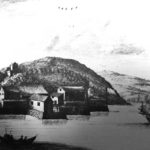 1610 Europeans discover TeaAs you may know, tea is an oriental product. Tea has been drunk for over 3000 years in China. In Japan, tea has been drunk for at least over 1000 years. Until a few hundred years ago, tea was only drunk in Asia, and it was not until much later that tea spread around the world. In 1519, Magellan […]
1610 Europeans discover TeaAs you may know, tea is an oriental product. Tea has been drunk for over 3000 years in China. In Japan, tea has been drunk for at least over 1000 years. Until a few hundred years ago, tea was only drunk in Asia, and it was not until much later that tea spread around the world. In 1519, Magellan […]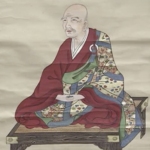 About monk Eisai(Founder of Japanese Tea)Eisai is famous as the founder of Japanese tea. He is said to have written the first book on tea in Japan, called “Café Yosoki,” and to have brought back tea seeds from China, making him the founder of Japanese tea. He was born in Okayama in 1141 at the end of the Heian period […]
About monk Eisai(Founder of Japanese Tea)Eisai is famous as the founder of Japanese tea. He is said to have written the first book on tea in Japan, called “Café Yosoki,” and to have brought back tea seeds from China, making him the founder of Japanese tea. He was born in Okayama in 1141 at the end of the Heian period […]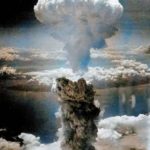 Atomic bombing in NagasakiAs someone who lives in Nagasaki and deals with Nagasaki tea, I cannot turn my back on this history. At 11:02 a.m. on August 9, 1945, the U.S. military dropped the atomic bomb “Fat Man” on the city of Nagasaki in Nagasaki Prefecture, Japan. The bomb killed about 74,000 people out of the […]
Atomic bombing in NagasakiAs someone who lives in Nagasaki and deals with Nagasaki tea, I cannot turn my back on this history. At 11:02 a.m. on August 9, 1945, the U.S. military dropped the atomic bomb “Fat Man” on the city of Nagasaki in Nagasaki Prefecture, Japan. The bomb killed about 74,000 people out of the […] AccessBusiness Address 133 Sonogishukugo, Higashisonogi, Higashisonogi District, Nagasaki 859-3807, Japan *Please note this is NOT our tea tour location address […]
AccessBusiness Address 133 Sonogishukugo, Higashisonogi, Higashisonogi District, Nagasaki 859-3807, Japan *Please note this is NOT our tea tour location address […]